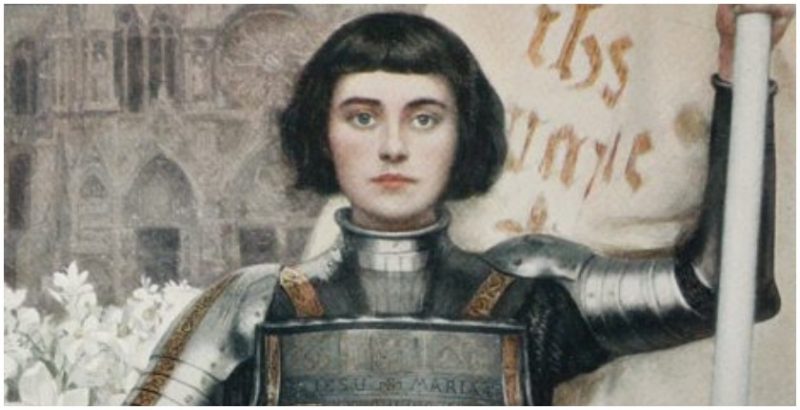Joan of Arc is adored and venerated in France. There are statues of her throughout the country, especially in places like Paris, Rouen, Orléans, and Reims.
Although condemned by the Catholic Church and publicly burned at the stake in Rouen in 1431, such was her revered status as a military and religious figure that it was not long before people started believing that she had somehow miraculously survived. And a few people, most notably Claudes des Armoises, took full advantage of this.
About five years after Joan’s execution, Claude met with Joan’s real brothers, Pierre and Jean, and convinced them that she was indeed their sister. According to the Chronicles of the Dean of St. Thibaud de Metz (La Chronique du Doyen de Saint-Thibault de Metz), Claude, who also went by Jeanne (or Joan), arrived in Metz on May 20, 1436, and “on that day her [Joan of Arc’s] two brothers day came to see her, one of whom was a knight called Messire Pierre, and another, ‘petit Jehan’, was a squire. And they believed that she was burned, but as soon as they saw her, they recognized her and she them.”
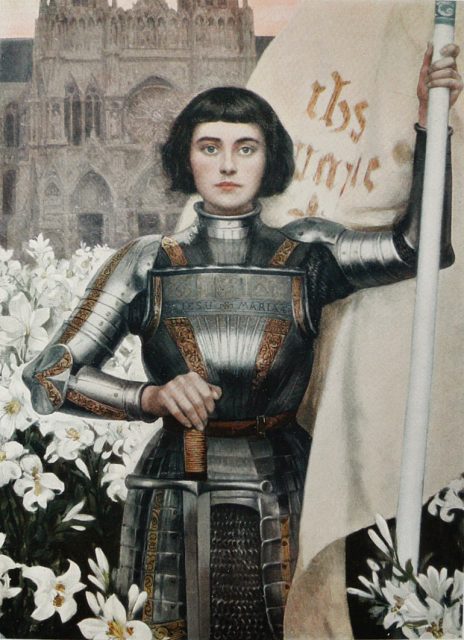
Contemporary sources note that Claude looked remarkably like Joan, so it is possible that the brothers believed her; however, as Anatole France, a 19th century French writer, put it, “They believed, because they wished to believe.”
Another scenario is less wholesome – the brothers went along with Claude because all three of them thought they could make some money from the scheme.
Regardless of their reasoning, the brother’s took Claude to see Nicole Louve, who had witnessed the coronation of King Charles VII with Joan in 1429. Also believing her to be the real Joan of Arc, Louve gave her a horse, a hooded cloak, and a sword. That she could ride a horse well was remarkable, and lent more credibility to her story; most peasants at the time were not experienced horsemen or horsewomen.

Like Joan, Claude wore her hair short, in a men’s style, and had already posed as a soldier in the army of Pope Eugene IV, where she allegedly did away with two men during a rebellion in Rome in 1435. She spoke almost exclusively in Christian parables, which enabled her to cloud certain facts and contributed to her mystery.
Together with her “brothers” and two more nobles provided by Louve, Claude and her entourage traveled across north eastern France to Arlon and the court of Princess Elizabeth of Luxembourg, whose husband had fallen in the Battle of Agincourt in 1415.

The princess lavished the party with gifts. It was here that Claude also became embroiled in a dispute over the investiture of the bishopric of Trier. Ruprecht compte de Virnebourg, who had fallen in love with “Joan”, supported one of the contenders, Ulrich von Manderscheid.
He put Claude/Joan in charge of a mercenary military unit, which was to be sent to the German city of Cologne to support Manderscheid, who ironically had once been excommunicated. And, according to the chronicles of the city of Cologne, the “maid of France” arrived on August 2, 1436.
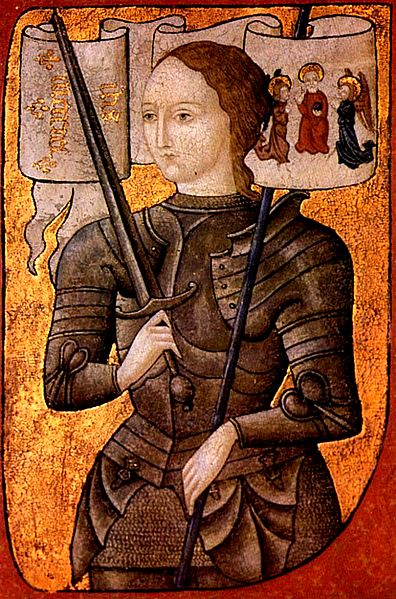
However, while in Cologne, Claude drew the wrong kind of attention, especially from Johannes Nider, an inquisitor of witchcraft. Sometime around 1435-37, he wrote the “Formicarius” which mentioned Claude: “There was a young woman, who from time to time took on the behaviour of a male, and who was running around armed and with wildly flowing clothes, as soldiers in the pay of a nobleman do. She also let herself be seen dancing with men. And she used to drink and to carouse …
There were two rivals who fought then, to the regret of the inhabitants, for the bishopric of Trier. The young woman boasted that she could enthrone one of them, like The Maid Joanna did with Charles, the king of the Franks, whom she helped to grow stronger in his kingdom. What’s more, did she at the same time not claim to have been that Joanna from that time, whom God allowed to rise again?”

Another inquisitor, Heinrich Kalteisen, also took notice of Claude, and noted that she had been seen performing magic. As Nider wrote, “In the presence of the authorities she performed unusual things that were almost in the realm of magic. The Inquisitor has sent her a call together with a public demand to subject herself to a serious investigation.”
Sensing that it was time to leave, and fast, Claude returned to Arlon. Kalteisen nevertheless excommunicated her for witchcraft, wearing men’s clothes — as did the real Joan of Arc — and supporting the “wrong” candidate for the bishopric.

Back in France, Claude enjoyed relative safety. She married a knight by the name of Robert des Armoises, with whom she had two children. But, in 1439, Claude began to sense that her time as an impostor was coming to an end.
While in Orléans, at a lavish dinner in honor of the actual Joan’s good deeds for the city, Claude left in a hurry, having met Jean Luilier, who had made the real Joan of Arc’s clothing in 1429. As one contemporary source noted, “Possibly the false Maid fled from misgiving as to an encounter with her tailor, who of all men would have been able to detect an imposture.”
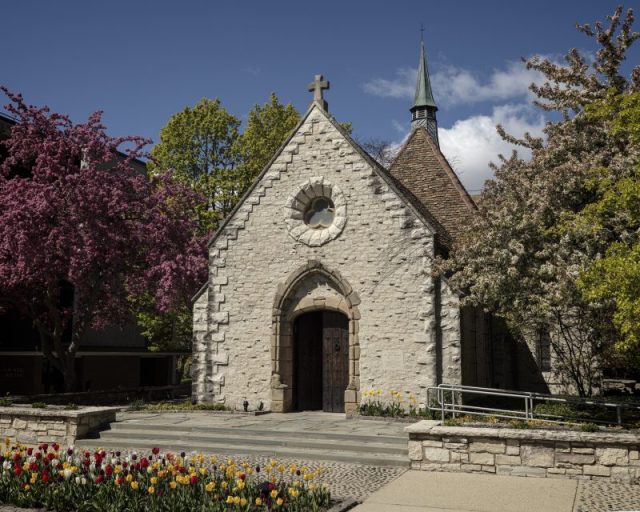
A few months later, Claude was called to meet Charles VII himself, whom the real Joan had helped put on the throne. Rightly suspicious, Charles devised a plan: he would send someone in his stead to meet Claude, claiming to be the king.
But Claude knew, likely from royal gossip among the nobles with whom she had spent so much time, that the king wore a soft boot on one of his feet as a result of ulcers. Noticing that the man she faced did not, she called his bluff and went to Charles VII himself. Astonished, he said, “You are welcome back, in the name of God, who knows the secret that is between us.” He was not referring to his foot, however.
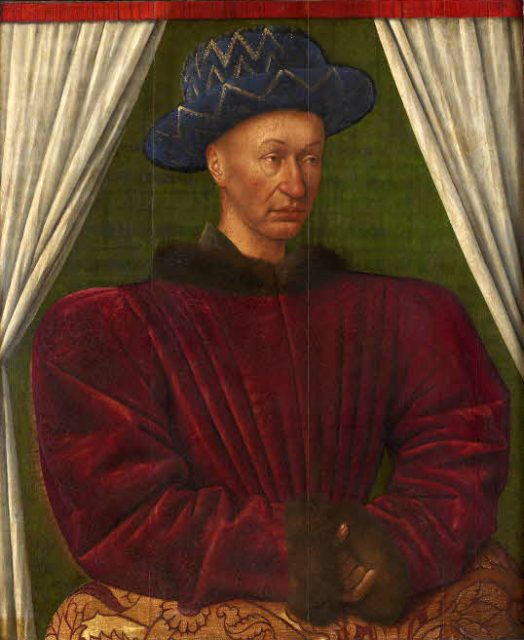
Claude did not, in fact, know of the secret between Joan and the king (to this day, no one knows exactly what it was) — she fell to her knees before him and confessed to being an impostor.
Fortunately, neither Claude nor Joan’s brothers were punished for their fabrications. Claude returned to her husband and lived a relatively uneventful life until her end in 1449. Her epitaph refers to her as both “Jehanne du Lys”, as well as “Jehanne du Lyss – La Pucelle de France” – a reference to the real Joan of Arc.
Read another story from us: When Joan of Arc Relics Turned out to be From an Egyptian Mummy
That people knew she was an impostor and still had a hard time letting go is not unusual. When a historic (or famous) person dies suddenly, it can be very hard for the public to let go. And in medieval France, in the throes of the Hundred Years War, it is not at all surprising that people wanted to cling to something, anything, to believe that their beloved Joan of Arc was still with them.
Joan of Arc was given a posthumous retrial in 1456, which declared her innocent and annulled her sentence. She became a saint in 1920.
